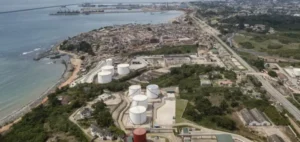Subsea7 S.A. announces a significant contract award from Serica Energy for the development of the Belinda field, located approximately 190 kilometers east of Aberdeen in the Central North Sea. The field, operated by Serica Energy, lies at a water depth of 95 meters. The contract covers the project management, engineering, procurement, construction and installation (EPCI) of a 5-kilometer production pipeline with a gas lift line and electro-hydraulic control umbilical. Associated subsea structures and connections to the Dana Petroleum-operated Triton floating production, storage and offloading (FPSO) vessel are also included in the contract. Project management and engineering work will start immediately in Aberdeen, while offshore operations are scheduled for the third quarter of 2025.
Subsea7 expertise and commitment
Steve Wisely, Senior Vice President of Inspection, Repair and Maintenance in the UK and worldwide at Subsea7said: “We are delighted to have this opportunity to provide our EPCI expertise to Serica Energy, and to demonstrate the extensive experience we have accumulated in the North Sea over the past 50 years. We look forward to supporting the safe, efficient and timely execution of this project. Subsea7 continues to create sustainable value by being the industry’s partner and employer of choice for the delivery of offshore solutions.
Economic Impact and Prospects
The contract, worth between $50 and $150 million, underlines the strategic importance of the Belinda field development for the North Sea region. By joining forces with Serica Energy, Subsea7 strengthens its position as a provider of subsea engineering and construction solutions. The North Sea remains a crucial region for the oil and gas industry, with projects like Belinda contributing to energy security and economic growth. Subsea7’s contract win for the Belinda project in the North Sea represents a major development for the offshore industry, and a testament to the company’s expertise and commitment to efficient and sustainable energy solutions. With operations scheduled for 2025, this project is well positioned to contribute to the region’s energy economy.





















